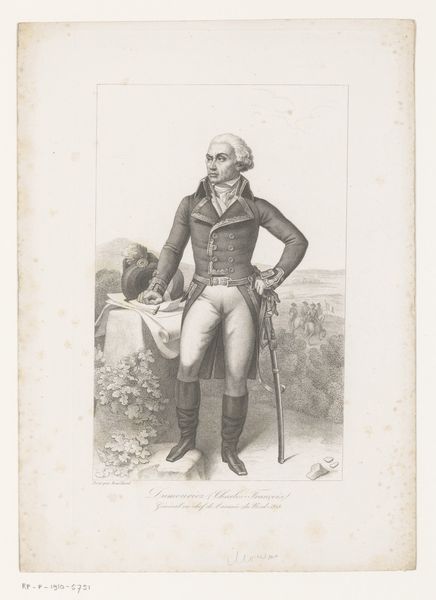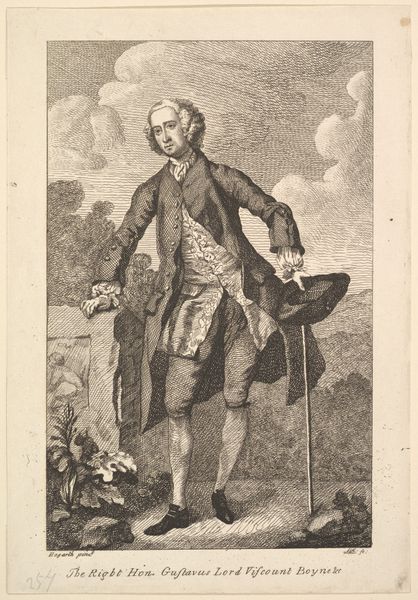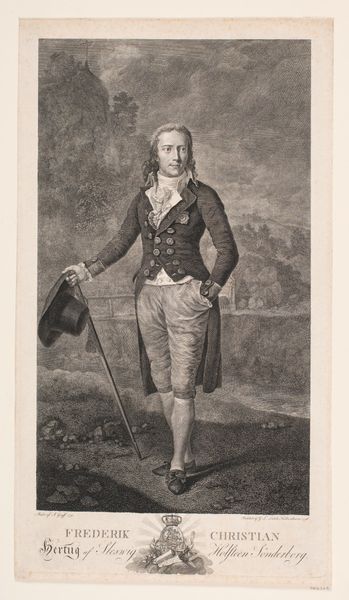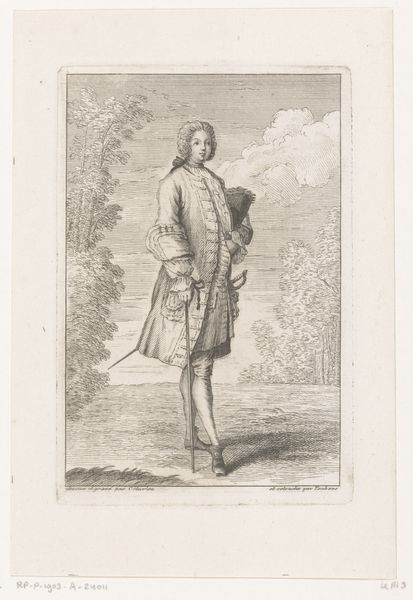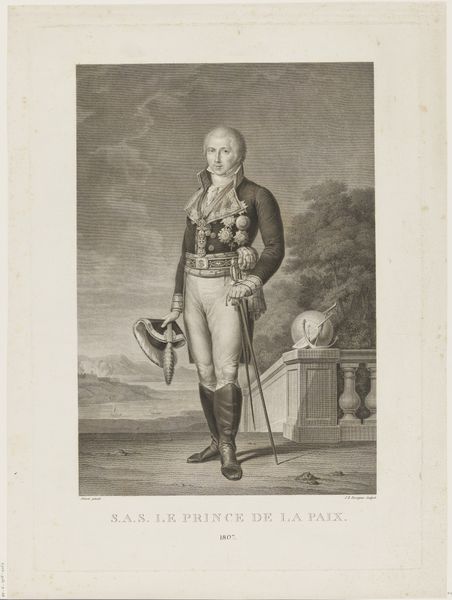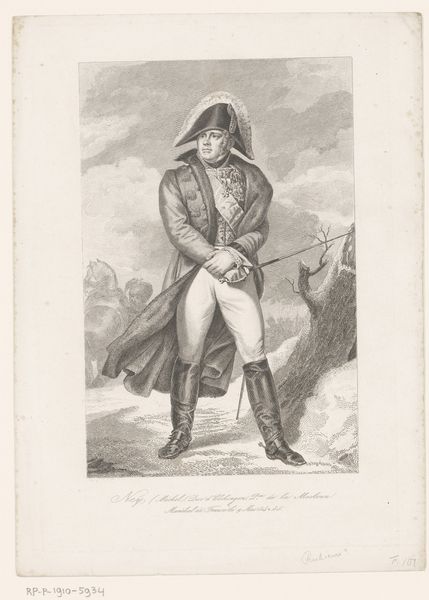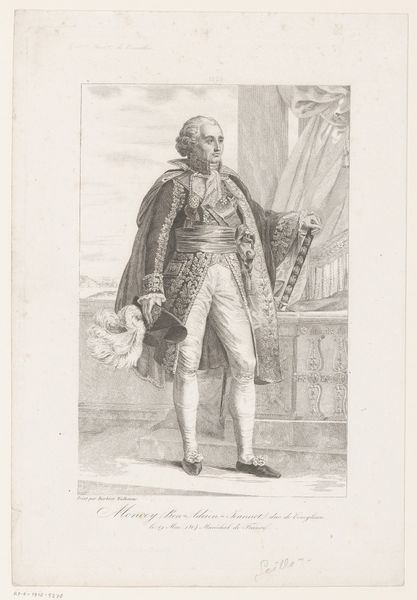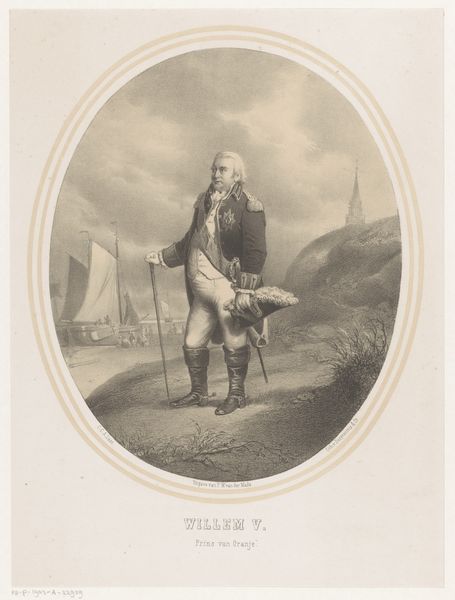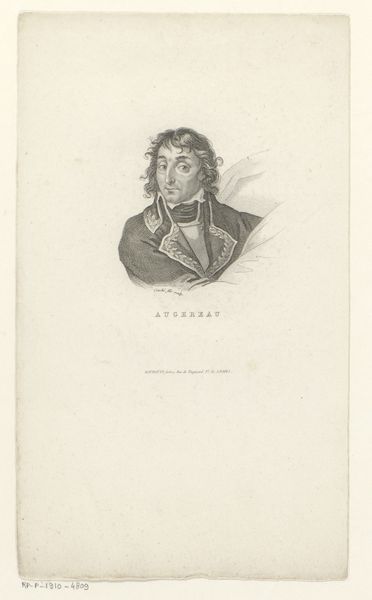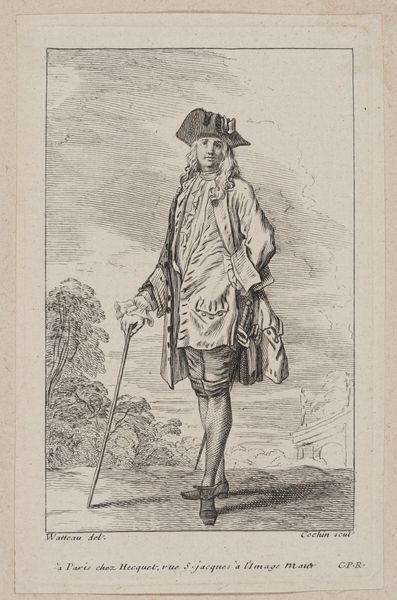
print, engraving
#
portrait
#
print photography
#
neoclacissism
#
16_19th-century
# print
#
history-painting
#
engraving
Dimensions: height 284 mm, width 209 mm
Copyright: Rijks Museum: Open Domain
Editor: So this is Charles Gavard's "Portrait of Louis Lazare Hoche", made between 1838 and 1841. It's an engraving, so a print. He looks rather dashing, very much the romanticized military figure. How should we interpret this through a historical lens? Curator: Well, engravings like this were mass-produced and distributed widely, cementing a particular image of historical figures in the public consciousness. Notice the subject, Hoche, posed authoritatively with a map – symbols of strategy and control. Who do you think this engraving was meant to reach? Editor: Probably people who admired Hoche or the military. I guess it could even be a tool of political propaganda? Curator: Exactly. It's also interesting to consider what aspects of Hoche's actual life and career are emphasized here and which are left out. For example, he was a key figure in suppressing internal rebellions during the French Revolution. How might the public reception of this image change depending on their views about that period? Editor: So, this seemingly straightforward portrait is actually loaded with political implications? Curator: Precisely. The museum plays a part, too, in continuing its story. Choosing to display this today is a political act. We are contributing to how the narrative around the French Revolution, and figures like Hoche, continues to evolve. Do you think placing this piece in the Rijksmuseum, a Dutch institution, is relevant to the interpretation? Editor: That's really insightful; it raises so many questions. Thank you! I never would have considered the museum's role in framing a piece like this. Curator: My pleasure! Seeing art as part of a larger historical and social narrative always adds another layer of meaning.
Comments
No comments
Be the first to comment and join the conversation on the ultimate creative platform.

